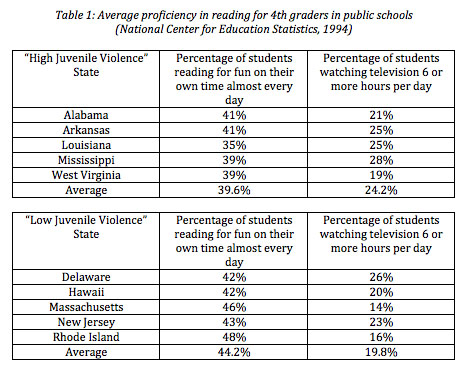[Editor’s Note: The following article by our colleague Dr. Miguel Faria is his classic discussion of Statistical Malpractice — ‘Firearm Availability’ and Violence (Part I): Politics or Science? as it was originally titled in the Medical Sentinel (2002;7(4):132-133). It remains a timely reminder of the unending games played by researchers with agendas, and is republished here with the author’s permission. Part 2 follows on Thursday.]
– – – – – – – – – – – – – – – – – – – – – – – – –
“There is a worrying trend in academic medicine which equates statistics with science, and sophistication in quantitative procedure with research excellence. The corollary of this trend is a tendency to look for answers to medical problems from people with expertise in mathematical manipulation and information technology, rather than from people with an understanding of disease and its causes.
“Epidemiology [is a] main culprit, because statistical malpractice typically occurs when complex analytical techniques are combined with large data sets. The mystique of mathematics blended with the bewildering intricacies of big numbers makes a potent cocktail….”
– Bruce G. Charlton, M.D.
University of Newcastle upon Tyne, 1996
In February 2002, a Harvard School of Public Health study was published in the Journal of Trauma.(1) According to the Violence Policy Center’s (VPC) interpretation of that study, “The elevated rate of violent death among children in high gun ownership states cannot be explained by differences in state levels of poverty, education, or urbanization.”(2) [Emphasis added.]
The authors of the study did not put it quite so bluntly; they knew better. Yet, according to the abstract of the study, they asserted:
“A statistically significant association exists between gun availability and the rates of unintentional firearm deaths, homicides, and suicides. The elevated rates of suicide and homicide among children living in states with more guns is not entirely explained by a state’s poverty, education, or urbanization and is driven by lethal firearm violence, not by lethal nonfirearm violence.“(1) [Emphasis added.]
In the authors’ abstract, the words “not entirely” become the key to understanding the preordained drift of their gun control agenda and the expected, result-oriented conclusions. The published study, indeed, is the typical, hackneyed public health, result-oriented gun research repeatedly published in the medical literature claiming that “gun availability is responsible for firearm violence.”
Thus, perhaps, we should analyze further the meaning of the words “not entirely.” What follows is a preliminary critique of the study while the primary, raw data is requested from the authors for further analysis.
According to the study, the five states with the highest gun ownership — Louisiana, Alabama, Mississippi, Arkansas and West Virginia — were more likely to have children dying from unintentional firearm injury (gun accidents), suicide (with or without firearms) and homicide than children in the five states with the lowest levels of gun ownership — Hawaii, Massachusetts, Rhode Island, New Jersey and Delaware.
Why more western states like North and South Dakota, Iowa, Wisconsin, Utah, Nebraska, Alaska, etc., that have relatively “easy availability” have low firearm death rates for children is left unexplained.
In fact, the whole study revolves around using the phraseology “not entirely” to exclude the much more important reasons for violence with or without firearms: the levels of poverty and education, not to mention the related cultural factors and the utter breakdown of the family in those states by welfare and other government policies.(3)
Another point of contention is that, as usual, the public health researchers ignored the beneficial aspects of gun ownership and concentrated only in obtaining supporting evidence for their preordained conclusion that firearm availability is responsible for violence in our society. Thus, they seek to disarm the law-abiding citizens who benefit from gun ownership.
It is the law-abiding who obey the law, criminals do not. When the government passes restrictive gun laws, those laws interfere with a constitutional right as well as in the lives of law-abiding citizens. Yet, these increasingly draconian laws do not stop criminals (or the mentally deranged) bent on breaking the law – they are only further impositions on ordinary Americans.
Television and Media Violence and Juvenile Delinquency
Another observation virtually ignored by the authors of the study, as well as their promoters at the VPC, is the effect of television and media violence on juvenile delinquency.
In the summer of 2000, the media, including medical journalists, focused their attention on the associations of violence in television, music, video games and movies to violent behavior in children and adolescents.
To this end, a consensus statement of experts released on July 26, 2002 and sponsored by the AMA and other medical groups proclaimed, “At this time, well over 1000 studies — including reports from the surgeon general’s office, the National Institute of Mental Health and numerous studies conducted by leading figures within our medical and public health organizations — point overwhelmingly to a causal connection between media violence and aggressive behavior in some children.”
Moreover, the report continued, “Its effects are measurable and long-lasting…prolonged viewing of media violence can lead to emotional desensitization toward violence in real life.”(4)
Why is all this background information being discussed about television violence and crime — virtually, life imitating art? Because, interestingly enough, the authors of the Journal of Trauma study ignored relevant and important data impacting directly on their research.
Let us look at Table 1:

Rather than using the biased, VPC shibboleths “highest” or “lowest gun ownership states,” I have used the more objective terminology, “high” and “low levels of juvenile violence” states, for the purpose of this critique. As clearly shown in this table compiled from government statistics (1994), it turns out that, among other factors, students in the “high levels of juvenile violence” states not only watch more television (24.2 percent) than those in the “low levels of juvenile violence” states (19.8 percent) but also do “less reading on their own time almost every day (39.6 percent vs. 44.2 percent).”(5) No statistical analysis is necessary to show that students in the HJV states spent less time reading and more time watching television. This important variable was not even mentioned or discussed by the authors!
Incidentally, on February 28, 2002, I wrote Dr. Matthew Miller, the lead author of the Journal of Trauma study and requested that he kindly supply me with the primary, raw data which he and his associates used in reaching their conclusions.(6) He never did.
In Part 2 of this article on Thursday, we will be looking at other factors that Miller et al claim were “not entirely” responsible for the high rates of violence in the mostly southern states.
— Miguel A. Faria, Jr., M.D. is a retired Clinical Professor of Neurosurgery and Adjunct Professor of Medical History at Mercer University School of Medicine. He is Associate Editor in Chief and World Affairs Editor of Surgical Neurology International. He served on the CDC’s Injury Research Grant Review Committee.
All DRGO articles by Miguel A. Faria, Jr., M.D.
References:
1. Miller M, Azrael D, Hemenway D. Firearm availability and unintentional firearm deaths, suicide, and homicide among 5-14 year olds. J Trauma 2002;52(2):267-275.
2. New Harvard University study shows direct link between gun availability and gun death among children. Press release: Violence Policy Center, February 21, 2002.
3. Bennett JT, DiLorenzo TJ. From Pathology and Politics: Public Health in America. New Brunswick, NJ, Transaction Publishers, 2000, pp. 80-83, 135-141.
4. Faria MA Jr. TV violence increases homicides. NewsMax.com, Aug. 17, 2000.
5. National Center for Education Statistics. NCES Fast Facts. Table 16: Average proficiency in reading for 4th graders in public schools, by selected characteristics, region, and state, 1994.
6. Open-data, public review policy of the Medical Sentinel of the Association of American Physicians and Surgeons (AAPS). Medical Sentinel 1999;4(6):193-195.
Copyright©2002-2016 Miguel A. Faria, Jr., M.D.


